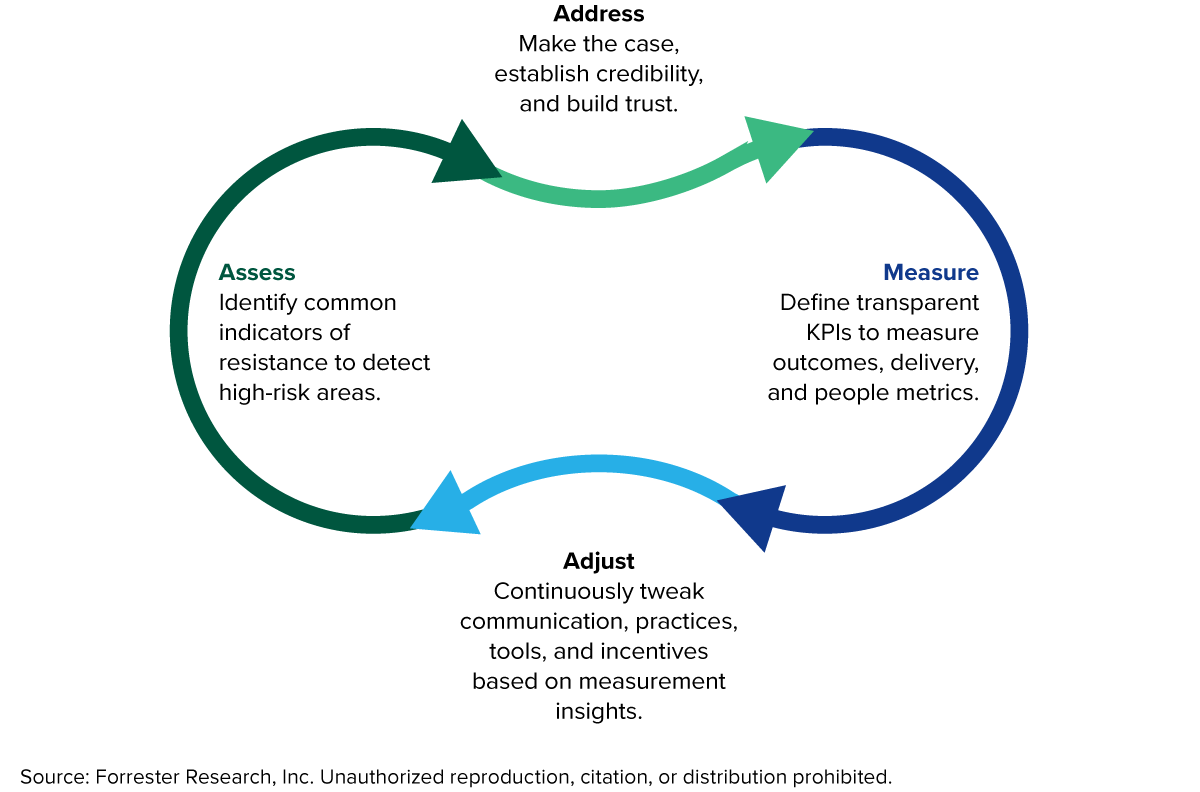Change Management In Digital Transformation: There’s No Tunnel, There’s No Light
Traditional Change Management Does Not Work In Digital Transformation
Change resistance is derailing transformations at an alarming rate. It’s no surprise that, according to Forrester’s Business And Technology Services Survey, 2022, change resistance is among the five most frequently selected challenges in executing digital transformation: 21% of global services decision-makers supporting their organization’s digital transformation cited implementation of new processes and capabilities as one of their greatest challenges.
Organizations have learned the hard way that change management is critical for transformation success. However, Forrester’s research shows that traditional change management concepts are ineffective in tackling change resistance in digital transformation. Transformation leaders need to embrace the following realities to be successful:
- There’s no tunnel, there’s no light. There is no finish line where change stops and a new, stable normal begins. The goal of digital transformation is more and faster change, creating a more adaptive, creative, and resilient organization. Traditional change management targeted at bringing an organization from one steady state to another is insufficient. Shying away from adjusting incentives in line with the change targets means reinforcing old muscle memory.
- Not everybody wins. Not wanting to address difficult messages is human. But it’s not good leadership. Employees know that not everybody wins in transformation. Skills lose relevance, team structures are shaken up, and the threat of layoffs is always looming over the initiative. It is hard to trust leadership and buy into the initiative if communication focuses on the benefits only and does not address the obvious downsides.
- If incentives don’t change, behaviors won’t either. Organizations develop a certain muscle memory about “how things are done around here.” Performance measurement and incentives cement routine behaviors by rewarding staff accordingly. Changing routines is hard, but chances of success increase if behavioral change is rewarded and incentivized with adjusted performance measurement.
- You can indeed overcommunicate. The old notion of “you cannot overcommunicate” is a severe mistake. Too many change management efforts rely on firehose, repetitive outbound communication, hoping the message will stick eventually. Successful transformation leaders listen more and talk less, targeting their communication strategy toward the specific concerns they’ve identified with a solid listening strategy.
- C-suite backing is not enough. Relying on senior executive buy-in only creates a missing link in change management. Middle management plays a crucial role in driving and contextualizing the transformation within their teams. Transformation leaders therefore need to create buy-in from middle management and provide them with the information and tools they need to be effective change leaders within their remit.
Consider Change A Skill To Be Built, Not A Problem To Manage
Transformation managers who acknowledge these issues look at change management in a fundamentally different way. They listen first and communicate later. They cocreate the future with all stakeholders; they invest in building execution credibility, focus on earning the trust of employees with honesty, and don’t shy away from the hard messages and from adjusting incentives to drive behavioral change.
Most importantly, they don’t consider change a problem to manage, but rather a crucial skill to be built for organizations to thrive in an increasingly volatile world. To be successful, they establish a permanent loop to assess, address, measure, and adjust toward an organizational culture that embraces change with confidence.

Want To Learn More?
Don’t wait until you’re in crisis mode. To learn more about managing change resistance in digital transformation, read my latest report on the topic. To discuss my research in further detail, schedule an inquiry or guidance session.
